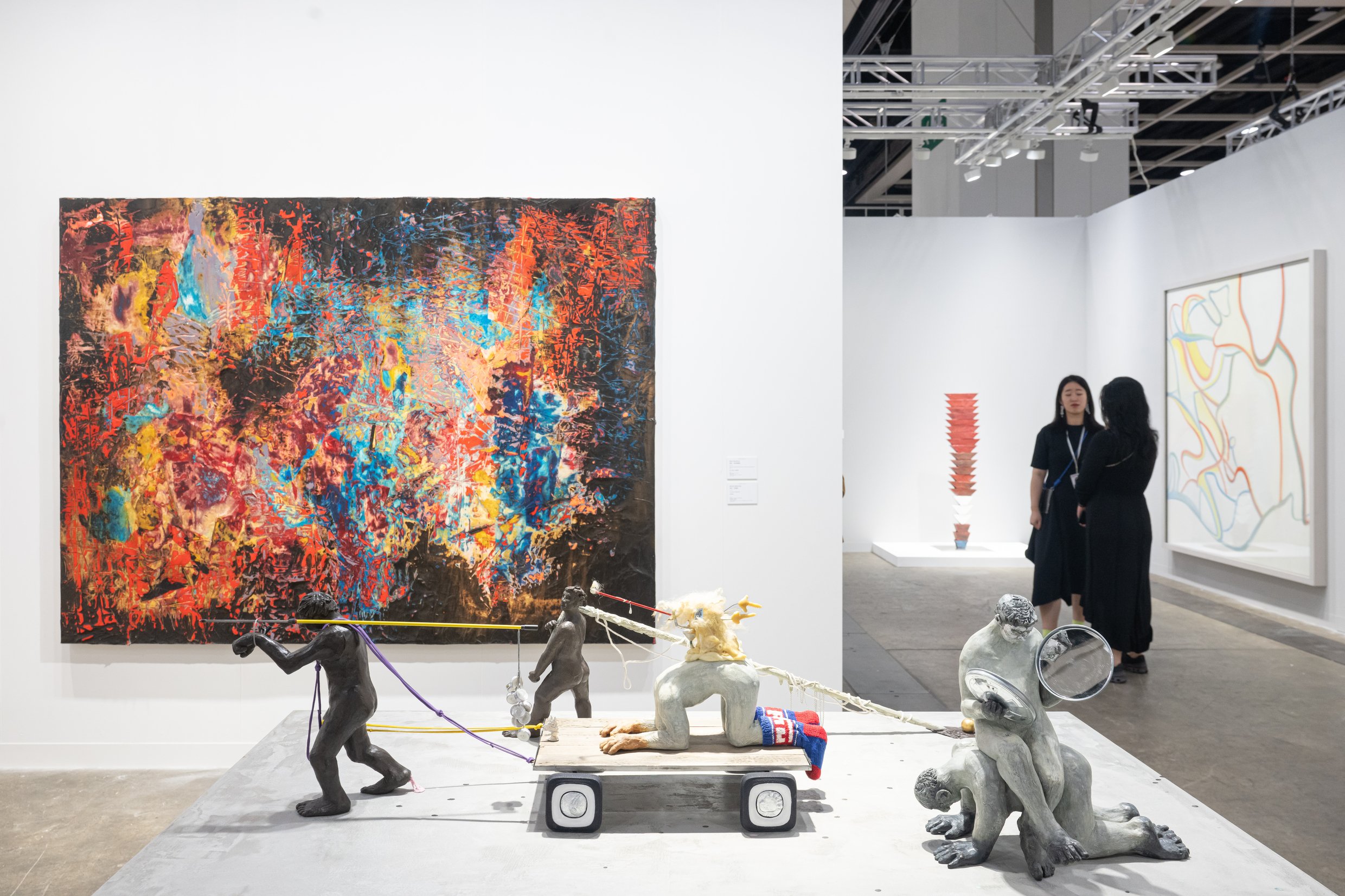
On Tuesday, Art Basel opened its latest Hong Kong edition to VIPs, amid concerns about the slowing Chinese economy and the political situation in the city, following the passage of strict new national security measures.
The event, at the Hong Kong Convention and Exhibition Centre, remains glamorous and energetic, and some of the more than 240 participating galleries reported robust sales, but the pace is slower, and the mood is more subdued than usual. The first VIP day saw hardly a single outlandish outfit, and the political art that was prominent in years past—especially from the U.S, and especially against capitalism, war, the patriarchy, and colonialism—was nowhere to be found.
“Nobody wants to stick out too much this year,” said one collector who asked not to be named, “either for their clothing or their political statements. The economy is not doing well, so nobody wants to show off. And the politics are complicated, so better keep a lower profile.”
Some of the most successful first-day sales were reported by the globe-spanning Hauser and Wirth gallery, which moved a late William de Kooning, Untitled III (1986), for $9 million, and a Philip Guston, The Desire (1978), to a collector in Asia, for $8.5 million.
“While the weaker Chinese economy is a reality, it doesn’t mean that we cannot work well,” Hauser and Wirth’s president, Marc Payot, said. “The number of collectors from there is very broad.”
The powerhouse White Cube gallery sold 10 works on opening day, the priciest being a piece by the Indonesian abstract painter Christine Ay Tjoe, for $750,000.
Ink Studio’s booth at Art Basel Hong Kong.
Given that traveling in and out of China has become a bit more complicated since the Covid-19 pandemic struck, many Chinese galleries have come to Art Basel Hong Kong aiming to connect with buyers from the Philippines, Singapore, and Malaysia, who would rather buy here. Those include the Beijing outfit Ink Studio, which brought contemporary ink paintings by Li Huasheng. Priced from $68,000 to $115,000, they have been finding new homes mostly in Southeast Asia.
There seems to be a slightly decreased appetite for South Korean contemporary works, which are less visible than in past years. Meanwhile, Japanese galleries are out in force, including the Takashi Murakami-founded Kaikai Kiki, whose enormous presentation—described by the gallery as “a display of art in one’s own dirty bedroom”—includes works by the Japanese artist Mr. His drawings and paintings of everyday Japanese girls, transformed into larger-than-life, multicolored figures that recall anime and manga characters, have been drawing a lot of attention from fairgoers.
One of Mr.’s teenage figures was also on offer at Perrotin. The canvas, with a pink-haired schoolgirl surrounded by sticker-like decorations (of cats, other girls’ heads, and more), sold for $300,000.
Some of the sales were already secured before the opening of the fair, but dealers were also doing business in-person in the early hours. This year, Art Basel divided the VIP day in two, with select “First Choice” collectors granted entry in the morning and early afternoon, and the remaining VIPs allowed in only at 4 p.m. The aim was to have the proceedings start with only the keenest buyers on the floor.
Dealer Sadie Cole and Philip Tinari, the director of the UCCA Center for Contemporary Art in China, stand inside Coles’s booth at Art Basel Hong Kong. A Lauren Owens painting is on the wall behind them.
That helped Massimo De Carlo, for one, begin the afternoon with close to half his booth sold, at prices from $20,000 to $200,000. “We didn’t notice a difference compared to last year, the first post-pandemic fair that seemed to have so much pent-up energy and desire for art on the part of the public and collectors,” said Claudia Albertini, senior director at the international gallery’s Hong Kong branch, “and the weakness of the Chinese economy hasn’t really affected sales so much.”
The bulk of the visitors on opening day were from mainland China, including dedicated collectors who have come to Hong Kong determined to buy like the economy is still in its go-go years.
There is also a larger presence of institutions from Hong Kong and the surrounding region, many of which have opened in recent few years. They have provided a steady stream of sales, even as some individual collectors are slightly more cautious. Sprüth Magers, for example, had made most of its sales, including abstract paintings by the South Korean artist Hyun-sook Song, who is based in Germany, to Hong Kong and Chinese institutions.
Overall, though, this year’s fair transmits a certain lack of certainty, or direction, that is not dissimilar to what many people in Hong Kong seem to be feeling right now.
Update, April 5: An earlier version of this article stated that White Cube sold an Anselm Kiefer piece for €1.15 million (about $1.25 million), relying on a sales report released by the gallery to press. A rep for White Cube later said that the work had not been sold.